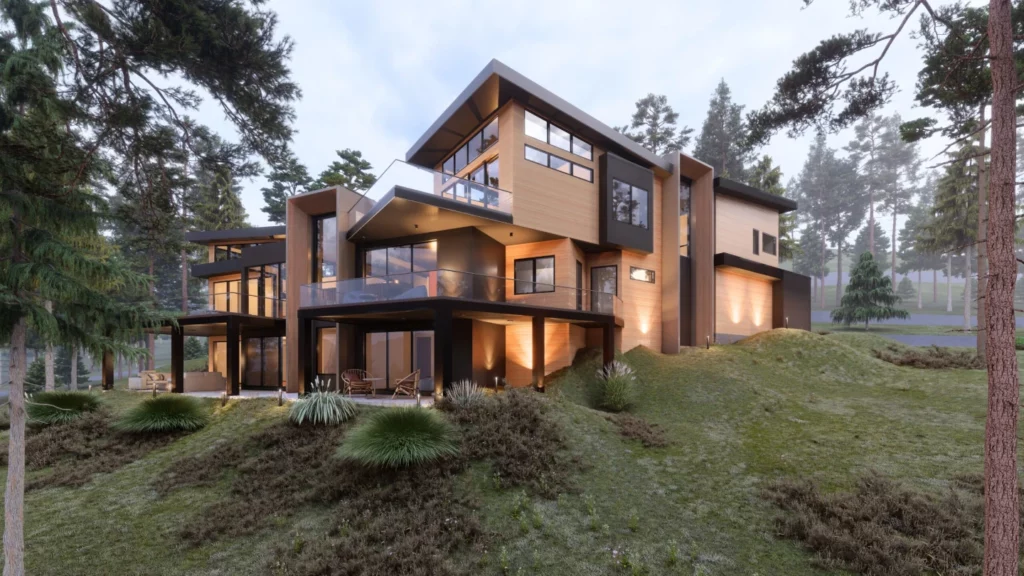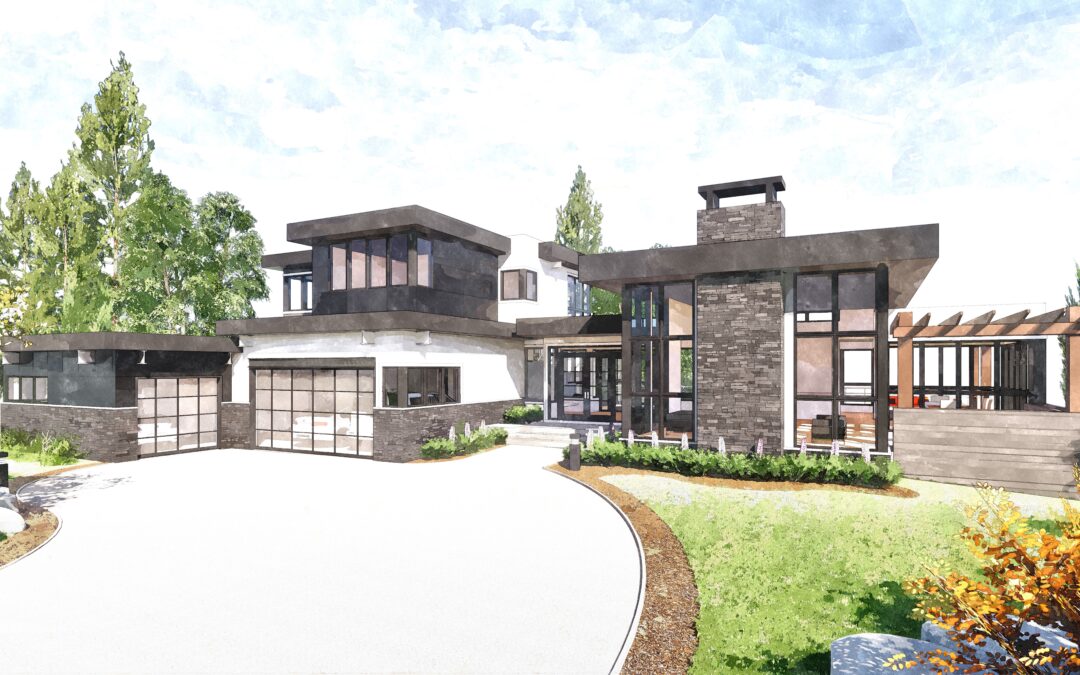In the ever-evolving field of home design, the quest to blend functionality with aesthetics stands as a cornerstone of design philosophy. This delicate balance seeks not only to fulfill the practical needs of daily living but also to elevate the human spirit through beauty and form.
For homeowners, home designers, and interior designers alike, achieving this harmony means capturing the essence of ideal living spaces and creating environments that resonate with our deepest desires for comfort and inspiration.
In this blog, we aim to demystify the principles and strategies behind integrating functional efficiency with aesthetic appeal within residential design in Calgary. By offering insights, examples, and practical tips, we strive to equip you with the knowledge to create spaces that truly reflect a balance between how we live and what we feel.
Understanding the Basics
Functionality in Home Design
At its core, functionality in home design refers to the design and organization of spaces that meet the occupants’ practical needs.
Functionality aims to enhance the livability and efficiency of a home, ensuring that it supports the daily activities and routines of its residents with ease and comfort. From the flow between rooms to the accessibility of essential features, functional design considers the practicalities of life at every turn.
Aesthetics in Home Design
Conversely, aesthetics in home design emphasizes the visual, tactile, and emotional impact of a space. It’s about the harmony of elements—color, form, texture, and light—that together create an atmosphere that appeals to the senses and emotions.
Aesthetic considerations bring personal expression, beauty, and character into a home, transforming it from a mere structure into a reflection of identity and artistic vision. Whether through the sweeping lines of a staircase, the warm glow of natural light, or the intricate patterns of a well-chosen fabric, aesthetics enrich our living environments with layers of meaning and beauty.

The Significance of Balance
Balancing functionality with aesthetics is more than just a design goal; it’s essential for creating spaces that truly feel like home. This balance impacts how we experience our living spaces every day. A well-designed home can boost our mood, improve our productivity, and even influence our health and well-being. Moreover, a home that skillfully combines practical design with visual appeal tends to have a higher market value. It’s not just about making a home look good—it’s about creating environments that work well and feel welcoming.
Why Balance Matters
- Quality of Life: Homes that balance practical needs with beauty enhance our daily lives. Imagine a kitchen that’s both easy to cook in and beautifully designed—it makes meal preparation more enjoyable.
- Property Value: Houses that achieve this balance are often more desirable, which can increase their value. It’s an investment in both the functionality and the aesthetic appeal of your home.
Key Home Design Principles to Achieve Balance
Achieving harmony between functional and aesthetic elements in home design involves adhering to several key principles. Here’s how you can apply these principles to your custom home design in Calgary and beyond:
- Form Follows Function: This principle argues that the shape of a building or object should primarily relate to its intended function or purpose. Start with the basics of what each space needs to do, and then design around those needs while keeping beauty in mind.
- Personalization and Flexibility: Design your space to reflect your personal style while being adaptable to changing needs. A room designed with flexible furniture arrangements can serve multiple purposes while still looking great.
- Material and Texture Harmony: Choosing materials that are durable and easy to maintain, while also being visually appealing, is key. For instance, hardwood floors are both practical and beautiful, adding warmth and elegance to any room.
- Lighting Strategies: Good lighting is essential for functionality, but it also plays a huge role in setting the mood of a space. Combining natural light with well-planned artificial lighting solutions can make a home both usable and atmospheric.
- Sustainability as a Bridge: Sustainable design focuses on reducing environmental impact and often naturally blends functionality with aesthetics. For example, using natural light not only reduces energy costs but also enhances the beauty of spaces.
Planning and Design Strategies
The foundation of creating a home that perfectly marries functionality with aesthetics lies in thoughtful planning and strategic design. Before diving into colors, materials, or furniture, it’s crucial to understand how spaces will be used, the needs of those living there, and the overall feel you want to achieve. Here are some strategies to guide you through this process:
Start with a Clear Vision
- Define Your Needs and Wants: List out what you need from each space in your home. Do you need a home office? A playroom for the kids? A relaxation nook? Identifying your needs early on will guide your design choices.
- Use Your Designer’s Questionnaire: Go through your answers to the questionnaire provided by your home designer about your preferences, goals, and needs for elements such as storage and spatial flow.
- Gather Inspiration: Use platforms like Pinterest, Instagram, or home design magazines to gather inspiration. Look for themes that resonate with your style and functionality needs.
If you’re unsure of your vision, consulting an expert is a great way to help bring your ideas to life.

Embrace the Power of Layout
- Efficient Use of Space: Think about the flow of movement within your home. Open floor plans might work well for social families, while separate rooms might better serve a need for privacy or quiet workspaces.
- Consider the Sun: The direction your home faces and where natural light enters can significantly affect both the functionality and aesthetics of your space. Plan rooms accordingly—morning light in bedrooms and evening light in living areas, for instance.
Make Smart Material Choices
- Durability Meets Style: Select materials that stand up to wear and tear but also appeal to your design sensibilities. For example, hardwood floors or porcelain tiles can offer both longevity and elegance.
- Consistency and Contrast: Use a consistent palette of materials to create a cohesive look throughout your home, but don’t be afraid to introduce contrasting elements for visual interest.
Focus on Lighting
- Layer Your Lighting: Incorporate a mix of ambient, task, and accent lighting in each room. This not only ensures spaces are functional at any time of day but also helps create the right mood and highlight design features.
- Natural Light Maximization: Consider how windows, skylights, and even door placements can maximize natural light, making spaces feel more open and connected to the outdoors.
Flexibility for the Future
- Adaptable Spaces: Design rooms that can evolve over time. A bedroom might need to become a home office, or a dining room might need to double as a homeschooling area. Choose furniture and layouts that can be easily reconfigured.
- Technology Integration: Plan for the integration of smart home technologies that enhance both the functionality and aesthetic of your home, from automated lighting systems to built-in speakers that blend seamlessly into the design.
Elevate Your Home with the Perfect Blend of Functionality and Aesthetics
Balancing functionality with aesthetics in home architecture is about creating spaces that not only meet practical needs but also inspire and delight. By applying the principles and strategies outlined in this guide, you can create a home that is both beautifully designed and wonderfully livable. Remember, the goal is to reflect your personal style and needs, making your home a true reflection of you.
Contact Ellergodt Design if you have any questions about implementing these ideas in your own home or for more information on our residential design services.

